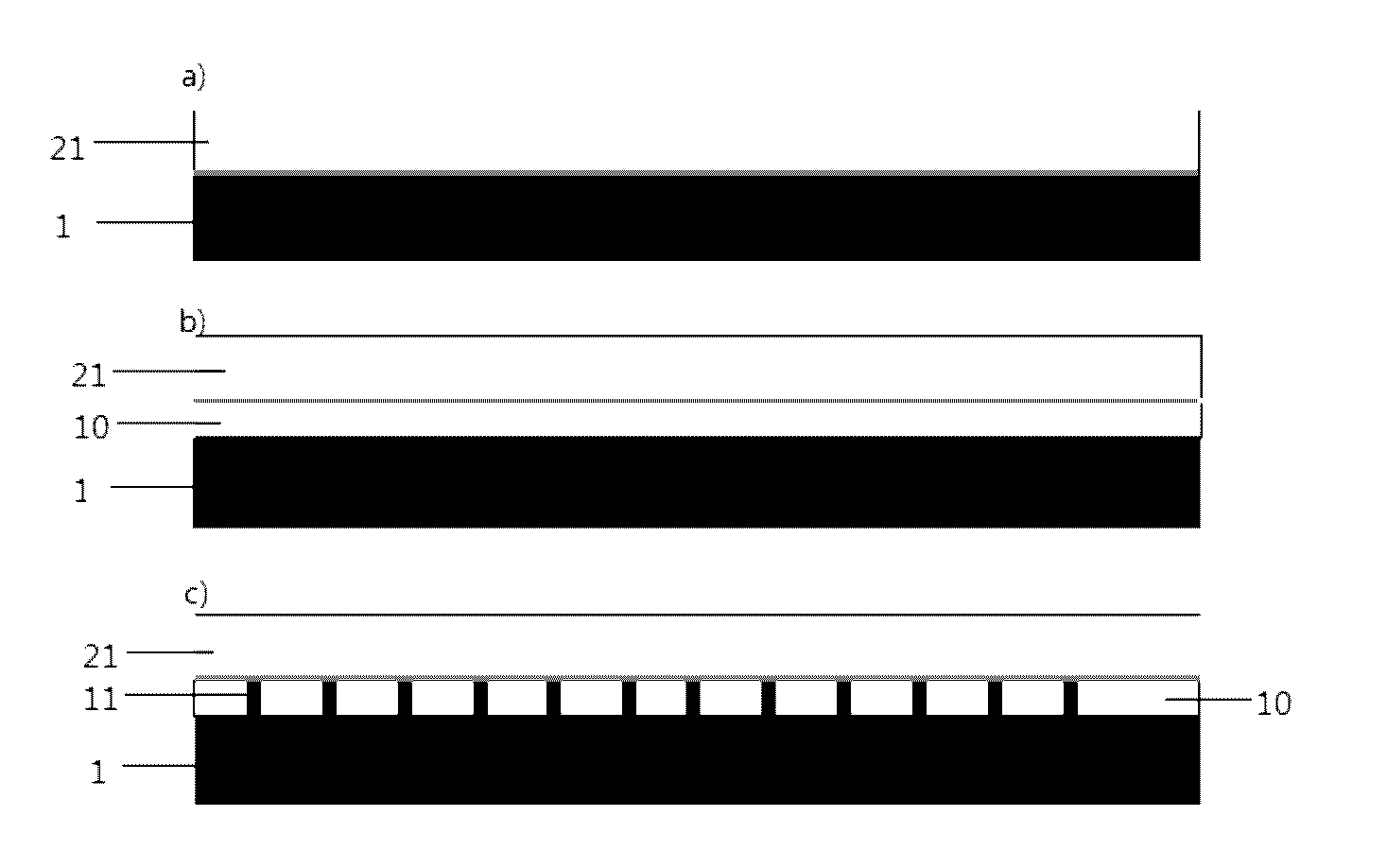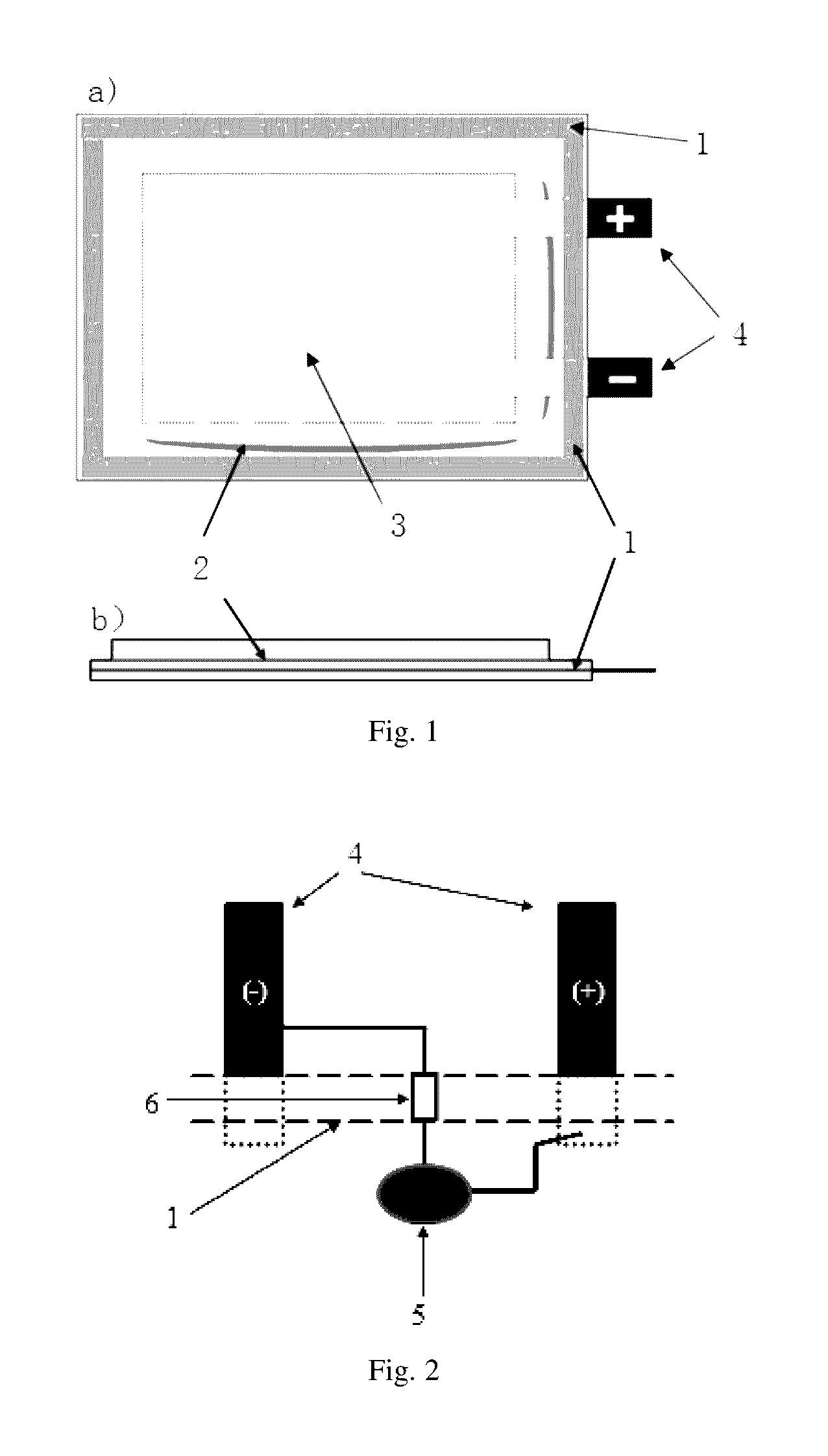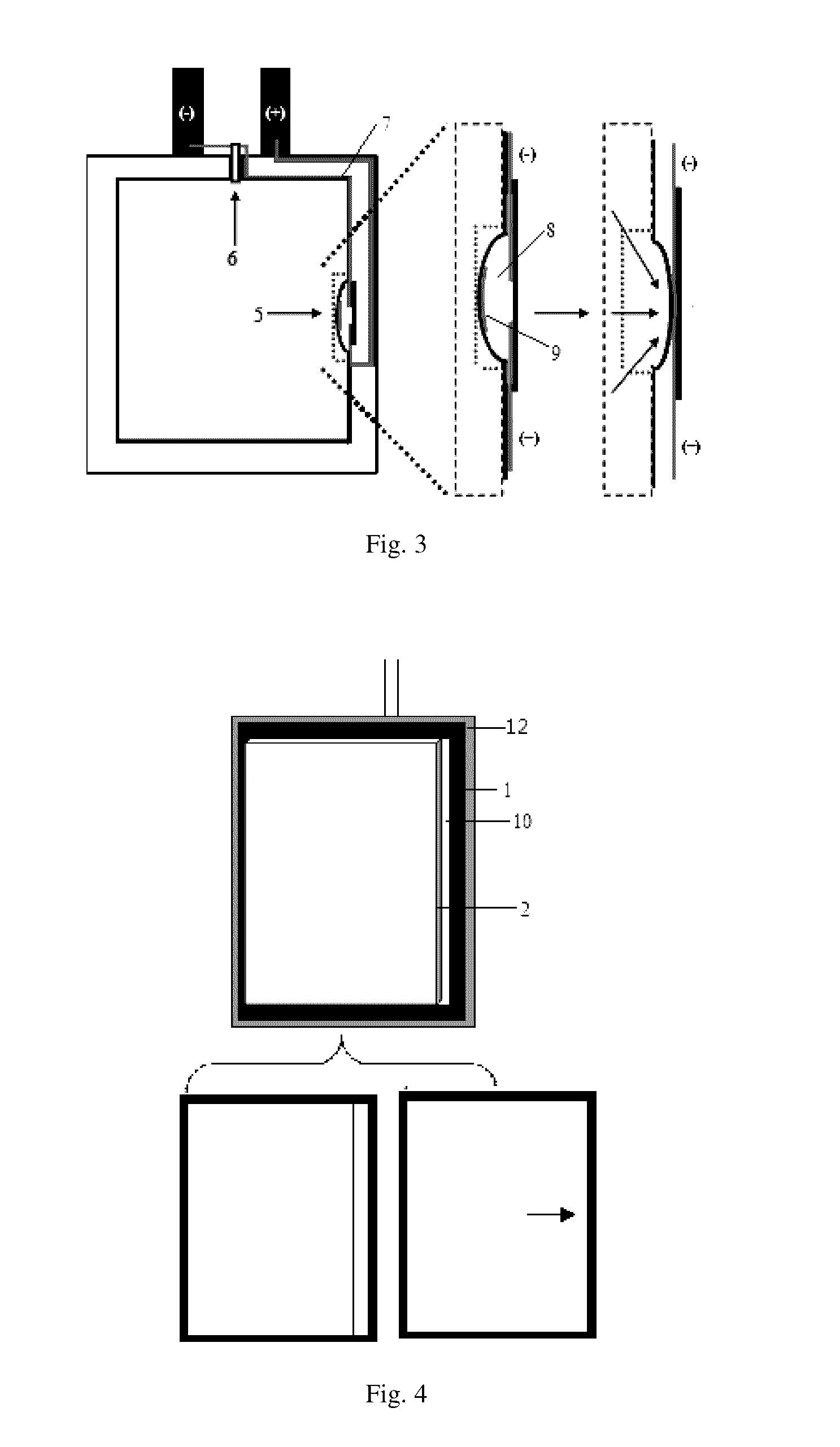Pouch cell
a technology of pouch cell and pouch body, which is applied in the field of pouch cell, can solve the problems of cell failure, affecting the thermal management of the system, and destroying the pack or device in which it resides, and achieves the effects of improving safety, avoiding leakage, and avoiding leakag
- Summary
- Abstract
- Description
- Claims
- Application Information
AI Technical Summary
Benefits of technology
Problems solved by technology
Method used
Image
Examples
example 1
[0066]This example is intended to illustrate the pouch cell of the present invention.
[0067]As shown in FIG. 7 and FIG. 8, an about 2 Ah Li-ion pouch cell is assembled, wherein a NiChrome wire of about 1 cm length and about 0.1 mm diameter is used as the heating element and is placed on top of the seal, external to the pouch cell, on the left side of the cell. The natural void area between the jellyroll and the tab side seal is utilized as the ballooning part of the pouch cell to act as the pressure trigger. A piece of Cu foil is placed on and across this region such that it is aligned with another piece of Cu foil attached to the frame that would hold the cell. The positive tab is connected by wire to the piece of Cu foil on the frame, opposite the piece of Cu foil applied to the cell. The Cu foil on the pouch cell pass around the edge of the cup and is attached to the NiChrome wire. The other side of the NiChrome wire is attached by wire to the negative terminal of the cell. In add...
PUM
| Property | Measurement | Unit |
|---|---|---|
| sealing temperature | aaaaa | aaaaa |
| thickness | aaaaa | aaaaa |
| temperature | aaaaa | aaaaa |
Abstract
Description
Claims
Application Information
 Login to View More
Login to View More - R&D
- Intellectual Property
- Life Sciences
- Materials
- Tech Scout
- Unparalleled Data Quality
- Higher Quality Content
- 60% Fewer Hallucinations
Browse by: Latest US Patents, China's latest patents, Technical Efficacy Thesaurus, Application Domain, Technology Topic, Popular Technical Reports.
© 2025 PatSnap. All rights reserved.Legal|Privacy policy|Modern Slavery Act Transparency Statement|Sitemap|About US| Contact US: help@patsnap.com



